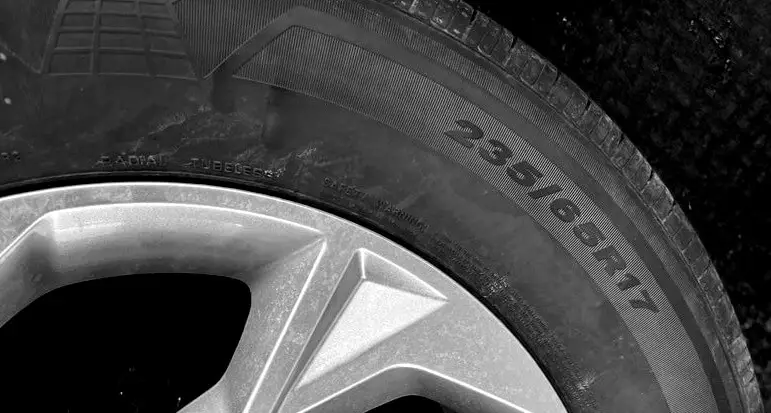Tire Size 235/65r17 vs 245/65r17
 Thinking about upgrading your tire size from 235/65R17 to 245/65R17? It’s a common consideration, but is it the right move for your vehicle? Let’s dive in and find out.
Thinking about upgrading your tire size from 235/65R17 to 245/65R17? It’s a common consideration, but is it the right move for your vehicle? Let’s dive in and find out.
- The 1.8% diameter difference is within the acceptable range for switching tire sizes
- Wider tires provide better traction and handling, especially in dry conditions
- Ride comfort may be slightly firmer but the difference is usually minimal
- Fuel efficiency may decrease by 1-2% due to increased rolling resistance of wider tires
- Minor drawbacks of wider tires include increased weight and longer airing up time
235/65r17 vs 245/65r17

Fitment Guide
The new tires should be within 3% of the original tire’s overall diameter. In this case, 245/65r17 tires are 1.8% larger in diameter than 235/65r17 tires, which is within the acceptable range.
However, this difference may still impact various aspects of your vehicle’s performance.
On-Road Impact
Switching to wider 245/65r17 tires can have several effects on your on-road driving experience:
- Speedometer Accuracy: The larger diameter of 245/65r17 tires will cause your speedometer to read slightly lower than your actual speed. At 20 mph, your actual speed would be 20.35 mph.
- Ride Comfort: The wider tire may provide a slightly smoother ride due to the increased contact patch with the road surface. However, this difference may be minimal and subjective.
- Fuel Efficiency: The larger tire size will slightly increase rolling resistance, which may lead to a minor decrease in fuel efficiency. However, this impact is likely to be negligible in most driving conditions.

Off-Road Impact
If you venture off-road, upgrading to 245/65r17 tires can offer some advantages:
- Ground Clearance: The larger diameter of 245/65r17 tires will increase your vehicle’s ground clearance by approximately 0.26 inches (6.5 mm). This extra clearance can be beneficial when navigating rough terrain or obstacles.
- Traction: The wider tread of 245/65r17 tires provides a larger contact area with the ground, which can improve traction in loose or slippery conditions. This can be especially helpful when driving on sand, mud, or snow.
- Durability: The increased sidewall height of 245/65r17 tires offers more cushioning against impacts from rocks or other obstacles. This added protection can help prevent damage to your wheels and improve overall durability in off-road conditions.

What is the Main Difference Between 235/65r17 and 245/65r17 Tires?
The primary difference is width – 245/65R17 tires are 0.39 inches (10 mm) wider than 235/65R17 tires. They are also 0.51 inches taller overall.
Can I Use 245/65r17 Tires Instead of 235/65r17?
Yes, in most cases you can use 245/65R17 tires without issues. The 1.8% difference in overall diameter is within the acceptable range to avoid rubbing or clearance problems. However, always double check your vehicle’s recommendations.
How Much Taller is a 245/65r17 Tire Than a 235/65r17?
A 245/65R17 tire is 0.51 inches (13 mm) taller than a 235/65R17 tire. The overall diameters are 29.54 inches and 29.03 inches respectively.
How Much Wider is a 245/65r17 Tire Than a 235/65r17?
245/65R17 tires are 0.39 inches (10 mm) wider than 235/65R17 tires. The actual section widths are 9.65 inches and 9.25 inches respectively.
Our Observations
Based on the data and our analysis, switching from 235/65R17 to 245/65R17 tires offers several benefits. These include improved traction and handling on both paved and off-road surfaces.
You can also expect slightly increased ground clearance for better off-road capability and enhanced sidewall protection against punctures and impacts.
However, there are some potential drawbacks to consider. Ride comfort may be minimally reduced due to stiffer sidewalls.
There may be a negligible decrease in fuel efficiency from increased rolling resistance. Additionally, you might experience minor speedometer inaccuracy (less than 0.5 mph at 20 mph).
Overall, the differences between these tire sizes are relatively small. The 1.8% difference in diameter and 4.3% difference in width fall within acceptable ranges for tire upgrades. While there are some trade-offs, the benefits often outweigh the minor drawbacks for most drivers.

Meet Caitlin McCormack, a Tire Size Expert and Blogger Passionate About Everything Related to Tires. With Years of Experience in the Tire Industry, Caitlin Has Become an Expert in Tire Sizes and Their Impact on Vehicle Performance.
